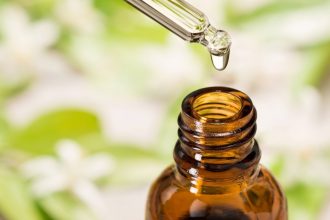In recent years, Kratom has become a buzzword in health circles, and not without reason. According to Johns Hopkins Medicine, 87% of users who treat opioid addiction with Kratom reported relief from withdrawal symptoms.
Additionally, its ability to enhance focus makes it an asset for fitness lovers, as it helps them zero in on their workout. This benefit also makes it appealing to students, who can use it to help study for tests.
Whatever your reasons, knowing how to make Kratom extract is a valuable resource. By creating an extract, you can ensure you get the amount of Kratom you need in a way that makes you comfortable.
If you want to learn how to extract Kratom, you’re in luck! In this article, we’ll cover several ways to create the best Kratom extract possible.
How To Make Kratom Extract: Required Materials
Extracts provide concentrated levels of Kratom, making them a more powerful way to consume this herb. They help you save money, as they allow you to buy Kratom in smaller quantities than other products.
There are three ways to extract kratom. The first of these is as a concentrated powder, the second a liquid (known as a tincture), and the third, a thicker extract called resin.
You can create either water or alcohol-based extracts, depending on your preference.
To begin making your extract, you’ll require the following materials:
- Kratom, in either powder or leaf form
- Ethyl or Ethanol alcohol
- Lemon juice or citric acid
- Scales to help you measure the powder accurately
- Measuring cups
- pH strips for measuring acidity levels in your extract
- Tinted bottles to help protect the extract from light
- Mason jars
- Fine strainers to help separate materials
Please note, some of these materials may not be necessary depending on the extraction method you choose. We’ll discuss these methods in more depth in the following sections.
Making Tea
Kratom tea gives you a lot of freedom in customizing your extract. You can experiment with several types and strains of Kratom, combining them to achieve the maximum benefits.
Tea may not be the most potent extraction method out there, but it is the most convenient. So, in this section, we’ll detail the process for making this tea.
Don’t Boil Your Water
First, be sure not to use boiling water for this tea. If you put Kratom in boiling water, it causes the alkaloid compounds to dissolve. Instead, you can boil water and let it cool for a few minutes, or aim for a temperature at around 190 degrees.
Add Acidic Ingredients
Kratom alkaloids include nitrogen, which can withstand high temperatures for prolonged periods. However, those high temperatures can still weaken the alkaloid potency. To decrease this effect, add some lemon juice to the tea.
For a fall or winter flavored tea, you can also substitute the lemon for apple cider vinegar. You can also add sweeteners to enhance the flavor, such as honey, cinnamon, or ginger.
Stirring The Tea
Stirring your tea is particularly important if you make the tea from Kratom powder. If you don’t mix the tea, the powder can settle in clumps, making for a disgusting taste.
Water-Based Kratom Extract
If you want to create a water-based extract, you can use either pure water or mix it in ethanol. Regardless of what you choose, you need to dissolve your Kratom leaves in the solvent. As this happens, add citric acid.
Once you’ve added the leaves, shake the mixture vigorously and leave it in a dark place to dissolve. A cabinet or pantry that blocks out light should suffice for this.
Once you’ve made your mixture, it’ll likely take 1-2 weeks for your Kratom leaves to dissolve entirely. Check your compound periodically to see how far along the leaves are in their dissolution.
After the leaves have entirely dissolved, it’s time to strain the mixture. Before you open your container, shake it well. Once you’ve finished this, open the container and use your strainer to cover the container’s mouth.
Pour the liquid through the strainer into either a glass or a metal mixing bowl. Then, remove any remaining powder or leaf residue from your second container. When you’ve done so, pour the liquid back into the extract container.
Lastly, you can increase your tincture’s potency by placing a fine strainer over the liquified extract. Once you’ve done so, let the liquid part of the extract evaporate. When you have as much liquid left as you want, fill your tincture bottles with your new extract.
The Best Kratom Extract: Resin
If you want to get the most unfiltered access to alkaloids, bypass tea and tinctures by creating a resin. This material is a semi-solid matter that takes less time to mix than tinctures.
The process for making resin starts in a similar way to creating a tincture. First, add water to a container of Kratom powder, enough to submerge it. As you mix the solution, add some form of citric acid, such as lime or lemon juice.
Steep this mixture overnight, then allow it to freeze until it’s solid. Next, place the frozen solution into boiling water. Once you’ve done this, add more citric acid and let the solution simmer.
When about one-quarter of the liquid evaporates, allow it to cool. Then, strain the mixture and leave it alone until half of it evaporates.
When you’ve finished this, you’ll have a bit of wet powder left behind. Simmer this powder with the citric acid of your choice. Repeat this step, then evaporate any remaining water in the oven. An oven temperature of 150-200 degrees Fahrenheit will do the trick.
Create Your Kratom Extract Today
For those who came to this article wondering how to make Kratom extract, we hope you’ve got some ideas now! There are several uses for Kratom, so be sure to create the extract that best suits your purposes. Once you do, you’ll have access to all of this herb’s extraordinary benefits.
We hope you enjoyed this article! For more like it, check out our other content today.














